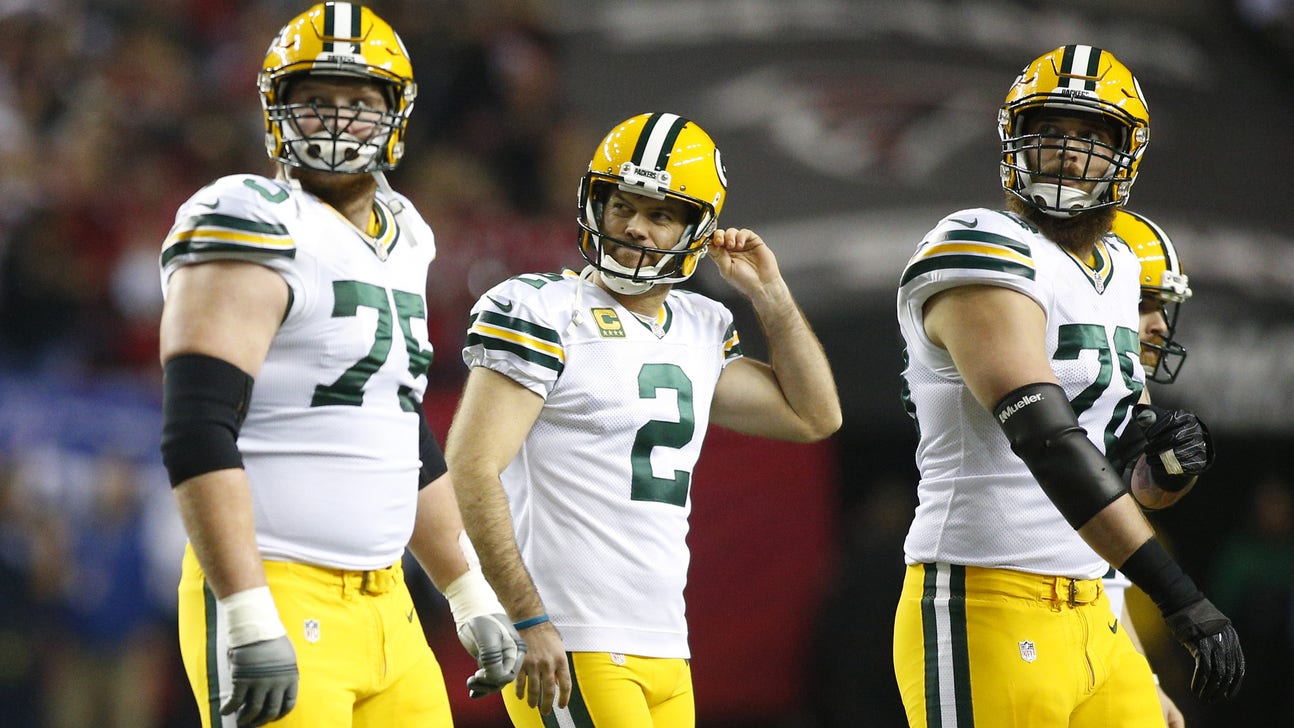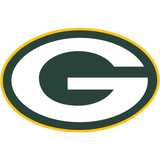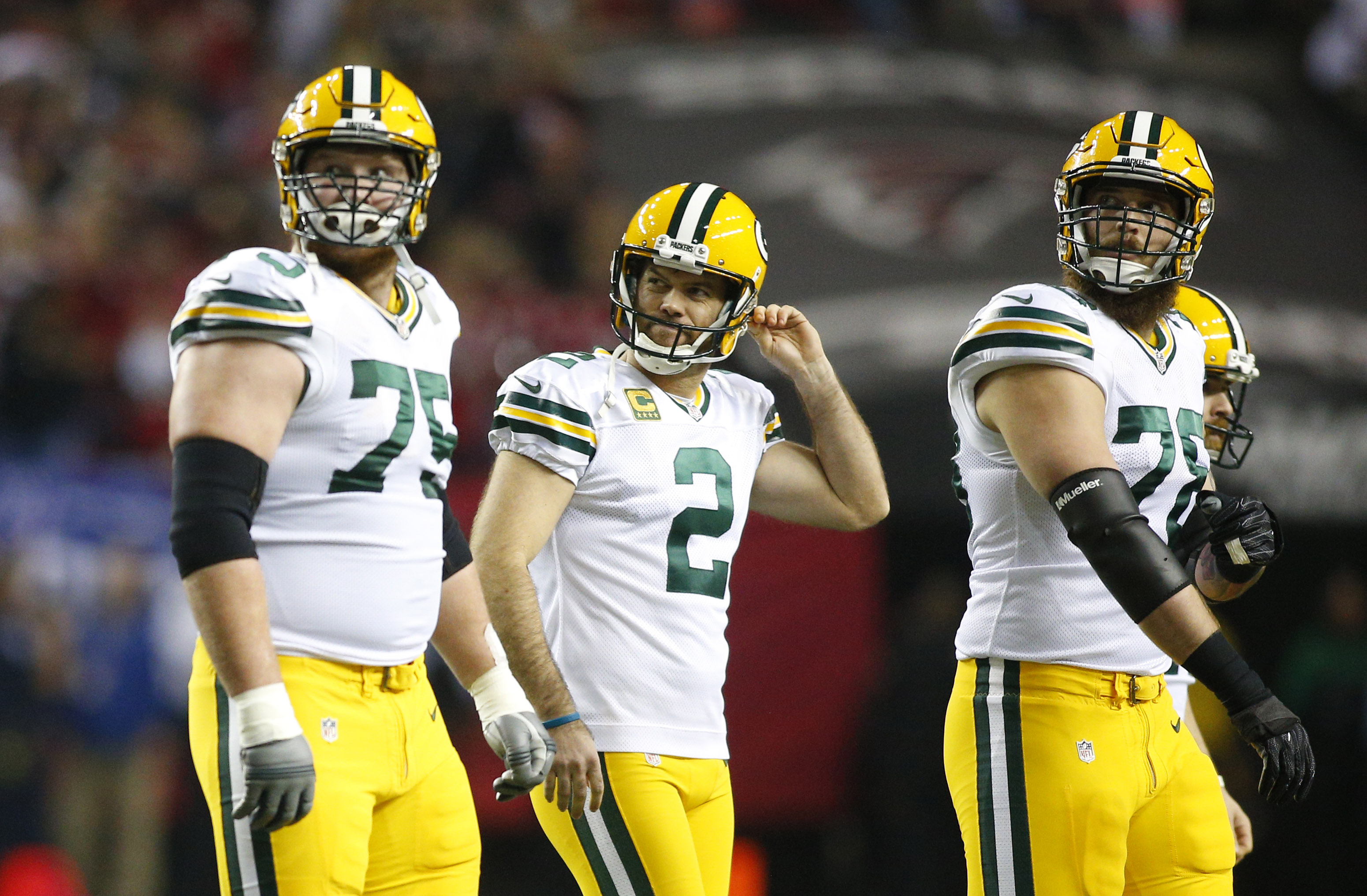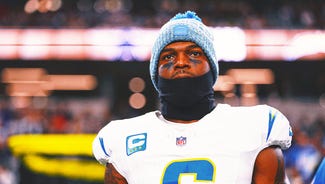
Green Bay Packers: NFC Championship Game special teams recap
The Green Bay Packers were run off the field from the opening snap, falling well behind early before eventually falling 44-21 to the Atlanta Falcons in the NFC Championship Game.
In one of their most disappointing showings of the season, the offense was unable to put any points on the board until they were already down 31-0, having just about every possible break going against Green Bay in the process to bury them and never let this truly become a contested game.
On the other side of the field, the already-depleted defense lost multiple pieces as the game progressed. Even with all of their expected guys lining up however, they probably wouldn’t have stood much chance against the buzzsaw of an offense Atlanta brought to the table; everyone from Julio Jones and Matt Ryan to Levine Toilolo and Patrick DiMarco had impactful plays and moments to obliterate the supposed efforts of the Packers’ defense.
With the massive issues plaguing the two main units of the team, the impact of the special teams guys wasn’t likely to be able to do much for them anyway. Still, they were out there, and they inflicted their own damage to the team’s efforts.
Let’s look into that, starting with their kicker.
Green Bay Packers kicker Mason Crosby (2) misses a field goal attempt in the first quarter against the Atlanta Falcons in the 2017 NFC Championship Game at the Georgia Dome. Dan Powers/Appleton Post Crescent via USA TODAY NETWORK
Mason Crosby
Kickoffs:
Scoring:
Well, that was a massive step down.
After putting up his best-ever performance against the Dallas Cowboys in the Divisional Round the previous week, it seemed perfectly reasonable to expect Mason Crosby to follow up that showing with another positive outing. It only took a single offensive drive to change that hope entirely.
With the offense stalling out on their first drive, Crosby had a chance to still get the Packers on the board and be down just 7-3 rather than 7-0. With his NFL record streak of 23 straight made field goals still going, it seemed guaranteed — especially after the way he hit two from 50+ the previous week and now was kicking merely from 41 yards out.
Automatic, it was not; Crosby pulled the kick wide right.
That kick ended up being the majority of his opportunity to make any impact at all. He had just a single other scoring opportunity — an extra kick, which he converted — and only four total kickoffs.
Of those four kickoffs, half were onside kicks (due to the massive deficit facing the team by the time they finally started getting into the endzone). Neither of those was recovered by the Packers (and even had they recovered both — based on recovery rates on onside kicks, that’s a 10% chance for each individual opportunity, by the way — the team would still have been looking at a 37-31 deficit at best while still needing to force Atlanta to give the ball back with little time remaining). The other two saw a blaise return to the Atlanta 20 yard line and a touchback.
Crosby didn’t have a good nor impactful day, but pushing his kick wide right was the first tangible sign of the comedy of errors and bad breaks that were on the horizon for Green Bay as a whole in this game.
Green Bay Packers punter Jacob Schum (10) against the Minnesota Vikings at U.S. Bank Stadium. The Vikings defeated the Packers 17-14. Brace Hemmelgarn-USA TODAY Sports
Jacob Schum
Punts:
With Green Bay failing to score for so long into the game, you would think that Schum’s leg would be getting a major workout. Due to the many unfortunate breaks suffered by the offense in the first half — the missed field goal by Crosby on the first Green Bay drive, Aaron Ripkowski‘s fumble on their second drive, Aaron Rodgers‘ interception on their fourth drive — and the large deficit the team was up against after all that however, Schum saw just a couple opportunities to get out on the field.
Can’t say he didn’t try to make the most of those few chances.
In a surprising turn for someone not known for leg strength, Schum put each of those kicks at least 50 yards down the field. The second was his better showing, going exactly 50 for a fair catch at the Atlanta 25; the first yet again showed the weakness still evident in his game.
He does have the ability to get the ball deep down the field without aid from the wind nor lucky bounces, but in gaining that distance he must sacrifice hangtime. When he does that, it gets the ball to the returner long before his coverage guys can get there, allowing for return yardage to get picked up. That’s what happened here, with 14 yards being handed right back to the Falcons.
Still, if his kick was one with proper hangtime it likely ends up right around there anyway, so the difference is basically null. With the other punt working out well, this was a really solid outing from Green Bay’s punter.
If only the same could be said for the rest of the team, maybe this may have actually been a close contest.
The Return Units
Punts:
Kickoffs:
Well, there really isn’t much to talk about in terms of statistical impact from this aspect of the special teams unit.
Out of eight kickoffs, the only one to see any return yardage (or even a return attempt at all) was one which came on a squib kickoff with three seconds remaining in the first half. Only two punts came on a day where the Falcons scored 44 points, and both of those became fair catches.
We could stop there, but I would like to take a quick dive into something I’ve noticed.
Here’s what’s bugging me: why do returners call for fair catches so deep within their own territory? I’m sure other teams do this as well, but I’ve noticed it far more often than I think should be happening with the Packers.
I don’t have exact numbers (…yet) but it has happened enough to grab my attention, and it really doesn’t make sense. Does catching the ball at your own 5 yard line really do your team any good? Sure, it might save from being pinned at the 2 or 1 maybe, but doesn’t it seem like the additional chance of maybe seeing the ball bounce either into the endzone or forward for a few yards would outweigh the certainty of having just 3 more yards?
It seems to me that would be the case, and if teams actually think about that level of minutiae (they do) then I would think they could see the exact thing which is gnawing at me here.
Then again, with how conservative teams tend to be in their game-planning overall, maybe I shouldn’t be all that surprised after all.
The Coverage Units
Punts:
Kickoffs:
We end on the coverage units, who (as with the rest of the special teams unit) did not experience all that much in terms of game action. What time they did get to spend on the field turned into a relatively bland outing.
Though there’s two sections here, it’s actually more like three in a way for their six total plays: two punts, two regular kickoffs, and two onside kicks.
The punt coverage wasn’t especially notable — the return was caused by the low-hangtime punt and not coverage mishaps, while they were in position as expected to force the fair catch on the second — but no errors is always a positive.
Basically the same story for the two regular kickoffs, though slightly better. Nothing to do on the touchback really, but the quick sprint down the field by the group on the first kick let them bring down the returner before he exited touchback yardage; with that, the Packers picked up an extra 5 yards of field position. Obviously that made no difference in a game where the team gave up around 500, but it is the sort of good play which tends to go unnoticed but does have the ability to be more important — especially if that feat is copied numerous times in a game.
Here’s where the good performance was somewhat damaged, if only slightly. First off, neither of the two onside kicks were recovered by Green Bay; that cut the already-miniscule chances Green Bay had at a comeback down to nil. That first one was notably worse than that, however; Mohamed Sanu was able to not only pick the ball out of the air in full stride, but had it not been for a last-grasp attempt to stop him, he would’ve taken the ball right into the endzone, adding even more insult and embarrassment to this catastrophically abysmal outing by the Packers.
That didn’t end up coming to fruition, but it might as well have. It would’ve fit in so well with what the other aspects of this team brought to the game.
More from Lombardi Ave














